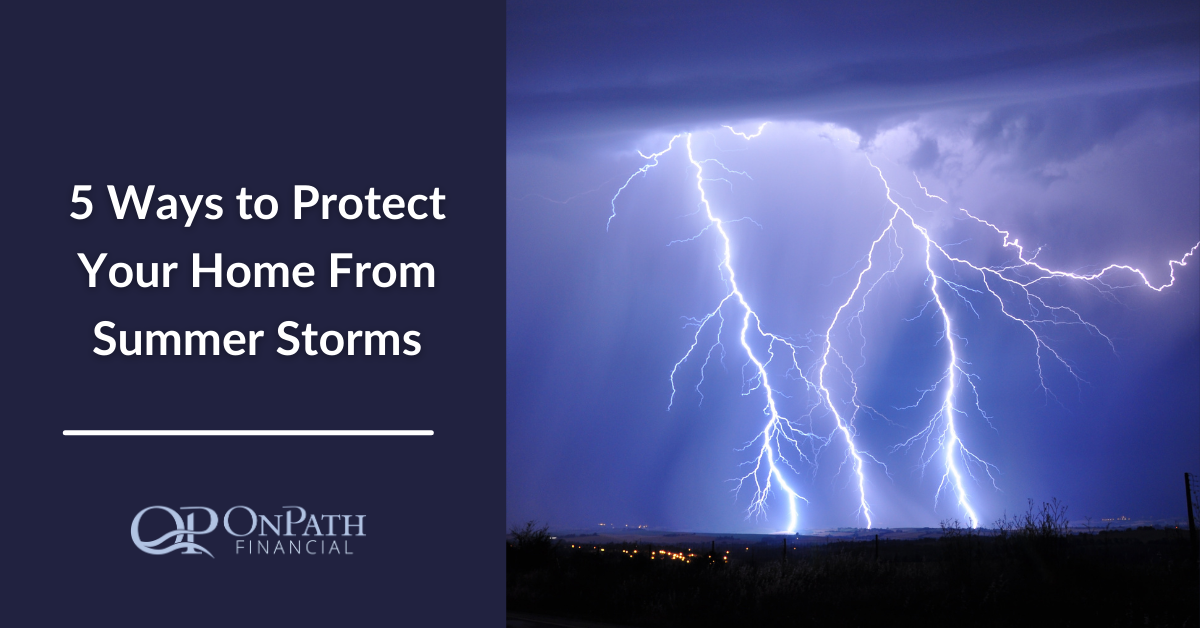[QUESTION]
I know that hurricane season starts on June 1. What should I be doing to protect my home (and my finances) from storms this summer?
[ANSWER]
This is the perfect time to take steps to help your home avoid damage from summer storms and other weather. Hurricane season runs from June to November, and it’s also prime time for tornadoes, other wind and rainstorms, and lightning strikes. The following steps can help you be prepared before a weather emergency strikes.
Update your home inventory.
This is one of the most important ways to make a homeowners claim go smoothly. Smartphones make it easy to gather the information (many insurers have home inventory apps, or go to KnowYourStuff.org). “Take pictures of your rooms, closets, attic, and your backyard,” says John Doak, Oklahoma insurance commissioner. Open drawers and cupboards so
everything gets photographed. Keep the photos and copies of receipts for valuable items online or outside of your home, such as with your insurance agent. That way, you can provide the file to the insurer immediately after the disaster and get the ball rolling on your claim.
Make sure you have the right insurance.
Let your insurer know if you’ve made any major home improvements — it usually doesn’t cost a lot to add tens of thousands of dollars in extra coverage. Also ask your agent or insurer what isn’t covered by your policy. For example, most homeowners policies don’t automatically cover sewage and drain backups, which can cause expensive damage if water and sewage backs up into your house. That can happen when the storm water system gets overwhelmed by rain during summer storms.
It may cost just $50 to add about $10,000 in sewage backup coverage, says Rene Hernandez, an independent agent in Oklahoma City. Flooding (water that enters your home from the bottom up) isn’t covered by homeowners insurance, but you can get a separate flood insurance policy from the National Flood Insurance Program. Go to FloodSmart.gov for more information. Don’t wait until a big storm is in the forecast — there’s a 30-day waiting period before flood coverage takes effect. Your homeowners insurance agent may also sell flood coverage.
Know your deductible and boost your emergency fund.
You may have little or no insurance coverage for some common storm damage expenses, such as the cost to haul away a fallen tree that doesn’t hit your home. Also, some insurers have special deductibles for windstorms or hurricanes in some higher-risk states; the deductible can be a percentage of your home’s insured value rather than a fixed dollar amount. If you have a 2% windstorm deductible and your property is covered for $300,000, for example, you’ll have to pay $6,000 out of pocket before the coverage kicks in for damages due to a windstorm. But the deductible you selected (such as $500 or $1,000) for other covered damages will still apply.
Take precautions to protect your home.
This is a good time of year to trim trees with low-hanging or unhealthy branches that could fall and damage your own or your neighbor’s property. “If you have an older tree that has to be looked at by a licensed arborist, have that done ahead of time,” says Carol M. Hanover, regional field director for northeast risk control for Travelers Insurance.
Before a storm, secure furniture and other items in your yard and patio that could become projectiles. Also fix any leaks in your roof, windows or skylights that might seem small now but could cause a lot of damage during a storm. Ask your insurer about steps you can take to protect your home that could also result in an insurance discount, such as installing storm shutters, using certain kinds of roofing materials, or installing a home generator that automatically turns on if the power goes out. The Federal Alliance for Safe Homes also has a list of steps you can take to protect your home from disasters.
Sign up for weather alerts and put together an emergency kit.
“Stock up on water and nonperishable foods, don’t forget your pets and medications, and have a portable radio and extra batteries for the radio and flashlight,” says Hanover. If you still have a landline, it helps to have an old-style phone you can plug into the wall that can work even if the electricity goes out.
Sign up for weather alerts so you’ll have some time to prepare. FEMA has a mobile app that provides alerts from the national weather service for up to five locations, safety reminders and tips, emergency checklists, and a tool that makes it easy to contact FEMA and find shelters. You can also get weather alerts from the National Weather Service and disaster preparedness tips at Ready.gov.
You can find out more about preparing for disasters that are common in your area by typing your zip code at DisasterSafety.org. Your insurer may also have resources to help, such as Travelers’ Prepare & Prevent website. Have an evacuation plan, and make sure you know how to contact your insurance agent or company after a disaster, including how to get in touch if you don’t have cell phone service.
___________________________
Important Disclosures
The opinions voiced in this material are for general information only and are not intended to provide specific advice or recommendations for any individual.
All information is believed to be from reliable sources; however LPL Financial makes no representation as to its completeness or accuracy.
This article was prepared by The Kiplinger Washington Editors.
LPL Tracking #1-05268401






